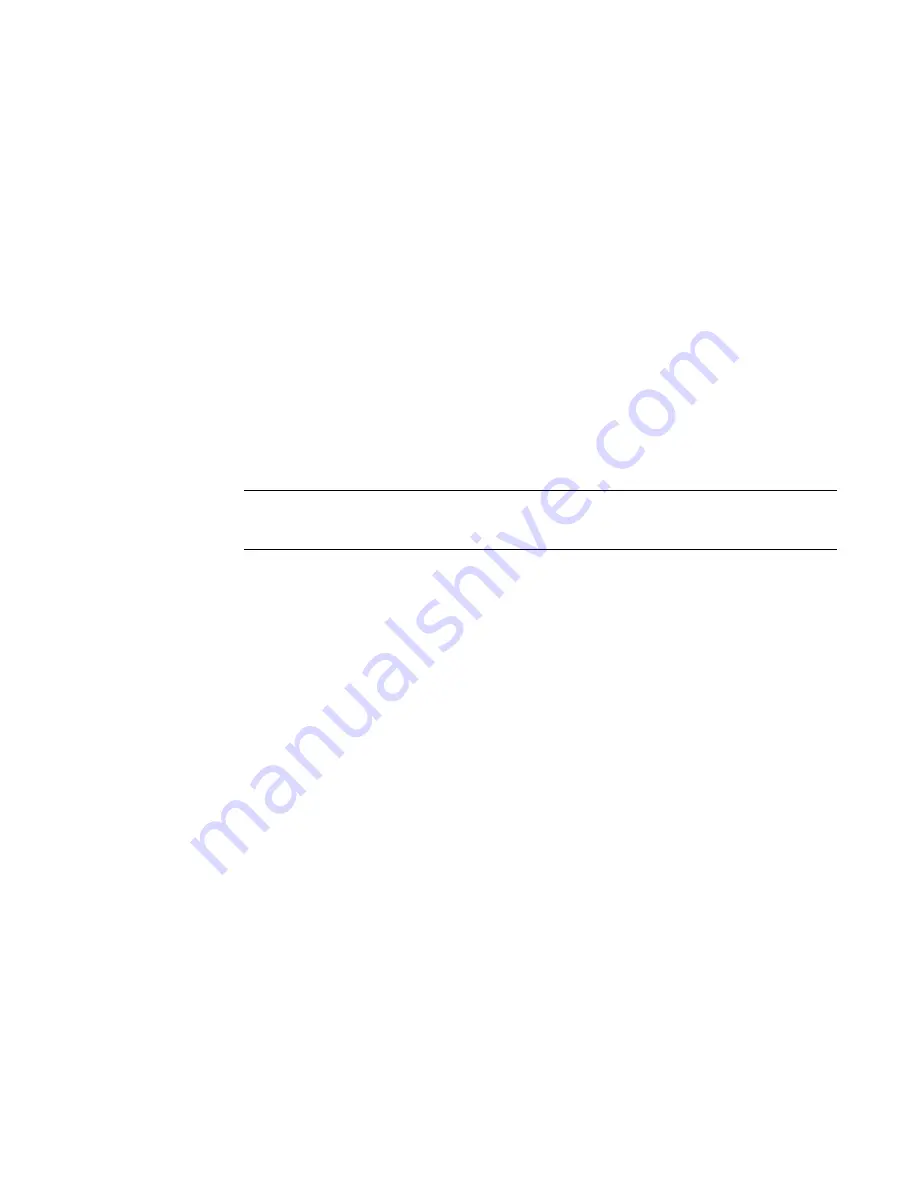
Defining the Graphic Display for Phase Statuses
You can apply a different graphic display or override to the elements in a phase status.
To specify a graphic override to the elements in a phase status
1
Click Settings menu
➤
Phasing
➤
Graphic Overrides.
2
Click Lines to specify the weight, color, and line pattern for projection lines and cut lines.
3
Click Patterns to specify color, and fill pattern for surface and cut patterns, and to turn the
visibility of the pattern on or off.
■
To display no fill pattern for the Phase Status, clear the Visibility selection.
■
To display the fill pattern according to the Object Styles defined under Settings, select No
Override.
4
Click Halftone to blend the line color half-way with the background color of the view.
■
When you select this option, all line graphics (including fill patterns) and solid fills are drawn
with halftone.
■
Halftone has no effect on material color in shaded views.
5
Click Material to specify the shading for shaded views and for the render appearance on the
Graphics tab.
NOTE
Shading and Render Appearance are the only valid options you can select from the Graphics
tab of the Material Browser. The surface pattern and cut pattern come from the settings you specified
on the Graphics Overrides tab of the Phasing dialog.
6
Click Apply to apply the change and keep the Phasing dialog open or OK to apply the change
and close the dialog.
Infill Elements for Phasing
If an insert (such as a window) and its host (such as a wall) do not have the same values for the Phase Created
and Phase Demolished properties, Revit Architecture automatically places an infill element in the host to
patch the hole created by the insert.
The infill element lets you place inserts in one phase, demolish them, and then place new inserts in the
same location. The infill element assumes the same structure as its host. In certain cases you can modify the
structure of the infill element by changing its type.
Infill elements for roofs and floors project down from the top face, and infill elements for ceilings project
up from the bottom face.
You cannot drag, move, mirror, rotate, copy, or paste an infill element.
Infill Elements for Earlier Phases
If you place an insert into a host in a phase later than the host's creation phase, Revit Architecture creates
an infill element for earlier phases.
For example, you create a roof in Phase 1. You add a skylight to the roof in Phase 2. You look at the roof
and skylight in a 3D view. If you set the 3D view's phase to Phase 1, an infill element replaces the skylight.
You can view this infill element in a section view.
Defining the Graphic Display for Phase Statuses | 1267
Содержание 24000-000000-9860 - Revit Architecture - PC
Страница 1: ...Revit Architecture 2009 User s Guide April 2008 240A1 050000 PM02A ...
Страница 4: ......
Страница 56: ...18 ...
Страница 116: ...78 Chapter 3 Revit Essentials ...
Страница 172: ...134 Chapter 4 ProjectViews ...
Страница 178: ...Schedule with Grid Lines Schedule with Grid Lines and an Outline 140 Chapter 4 ProjectViews ...
Страница 352: ...Defining the first scale vector Defining the second scale vector 314 Chapter 7 Editing Elements ...
Страница 554: ...516 ...
Страница 739: ...Curtain wall Curtain Grid Curtain Walls Curtain Grids and Mullions 701 ...
Страница 898: ...Pile caps with multiple piles Rectangular and triangular pile caps 860 Chapter 12 Working with Structural Components ...
Страница 1004: ...966 ...
Страница 1136: ...1098 ...
Страница 1226: ...1188 ...
Страница 1250: ...1212 ...
Страница 1276: ...1238 Chapter 20 Design Options ...
Страница 1310: ...1272 ...
Страница 1366: ...1328 ...
Страница 1406: ...1368 ...






























